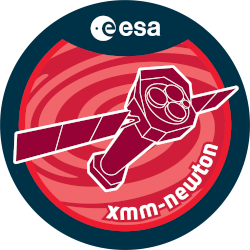

| Proposal ID | 013956 |
| Title | Study of the Globular Cluster Dip Source 4U1746-371 (NGC 6441) |
| Download Data Associated to the proposal | https://nxsa.esac.esa.int/nxsa-sl/servlet/data-action-aio?obsno=0139560101 |
| DOI | https://doi.org/10.5270/esa-4r0bnwk |
| Principal Investigator, PI | Dr Arvind Parmar |
| Abstract | We propose a 40 ks XMM-Newton observation of the dipping X-ray binary 4U1746-371in the globular cluster NGC6441. This source exhibits highly energy independentdips, consistent with an abundance >150 times less than solar, which repeatevery 5.7 hours, whereas the overall cluster abundance is only a factor 4-10below solar. Resolving this discrepency using time-selected EPIC spectra is aprime goal. In addition, recent XMM-Newton observations of the dip sourceEXO0748-676 and MXB1659-298 have revealed a plethora of discrete spectralfeatures such as absorptiona and emission lines, absorption edges andrecombination continua which provide powerful diagnostic capabilities. Asensitive search for similar features from 4U1746-371 is our other prime goal. |
| Publications |
|
| Instrument | EMOS1, EMOS2, EPN, OM, RGS1, RGS2 |
| Temporal Coverage | 2002-09-19T11:54:06Z/2002-09-20T00:43:12Z |
| Version | 17.56_20190403_1200 |
| Mission Description | The European Space Agencys (ESA) X-ray Multi-Mirror Mission (XMM-Newton) was launched by an Ariane 504 on December 10th 1999. XMM-Newton is ESAs second cornerstone of the Horizon 2000 Science Programme. It carries 3 high throughput X-ray telescopes with an unprecedented effective area, and an optical monitor, the first flown on a X-ray observatory. The large collecting area and ability to make long uninterrupted exposures provide highly sensitive observations. Since Earths atmosphere blocks out all X-rays, only a telescope in space can detect and study celestial X-ray sources. The XMM-Newton mission is helping scientists to solve a number of cosmic mysteries, ranging from the enigmatic black holes to the origins of the Universe itself. Observing time on XMM-Newton is being made available to the scientific community, applying for observational periods on a competitive basis. |
| Creator Contact | https://www.cosmos.esa.int/web/xmm-newton/xmm-newton-helpdesk |
| Date Published | 2003-10-13T00:00:00Z |
| Last Update | 2025-08-04 |
| Keywords | "XMM", "epic spectra", "XMM-Newton", "NGC 6441", "recombination continua", "overall cluster abundance", "globular cluster ngc6441", "sensitive search", "mxb1659 298", "absorption edges", "xmm newton", "EPIC", "emission lines", "powerful diagnostic", "4u1746 371", "discrete spectral" |
| Publisher And Registrant | European Space Agency |
| Credit Guidelines | European Space Agency, Dr Arvind Parmar, 2003, 'Study of the Globular Cluster Dip Source 4U1746-371 (NGC 6441)', 17.56_20190403_1200, European Space Agency, https://doi.org/10.5270/esa-4r0bnwk |